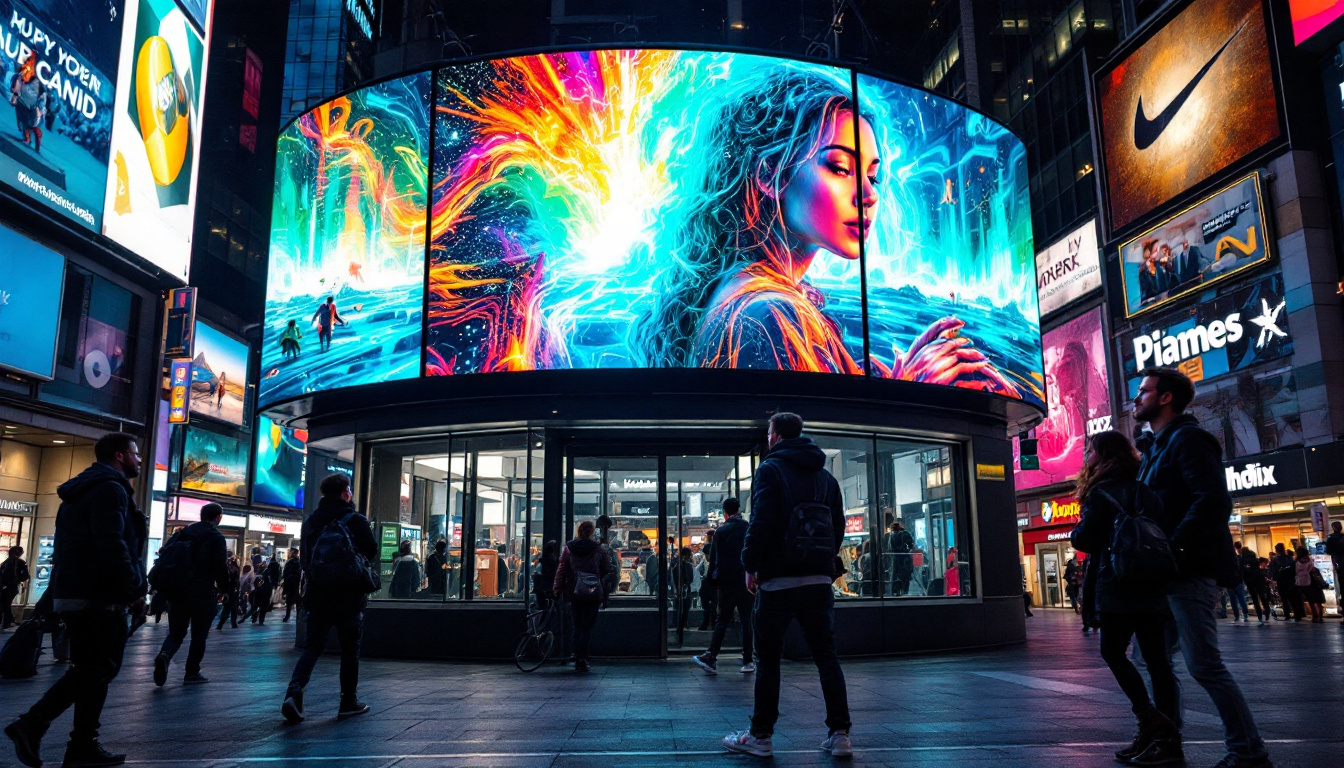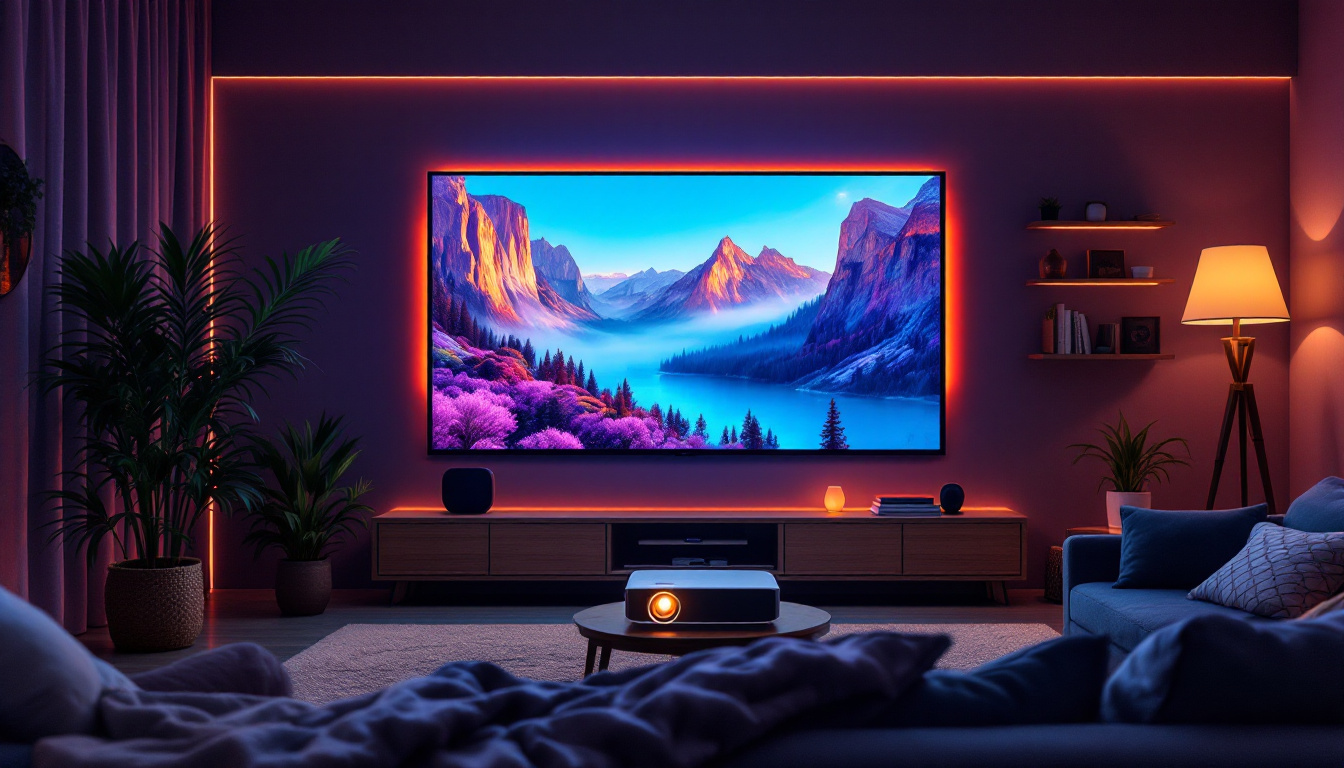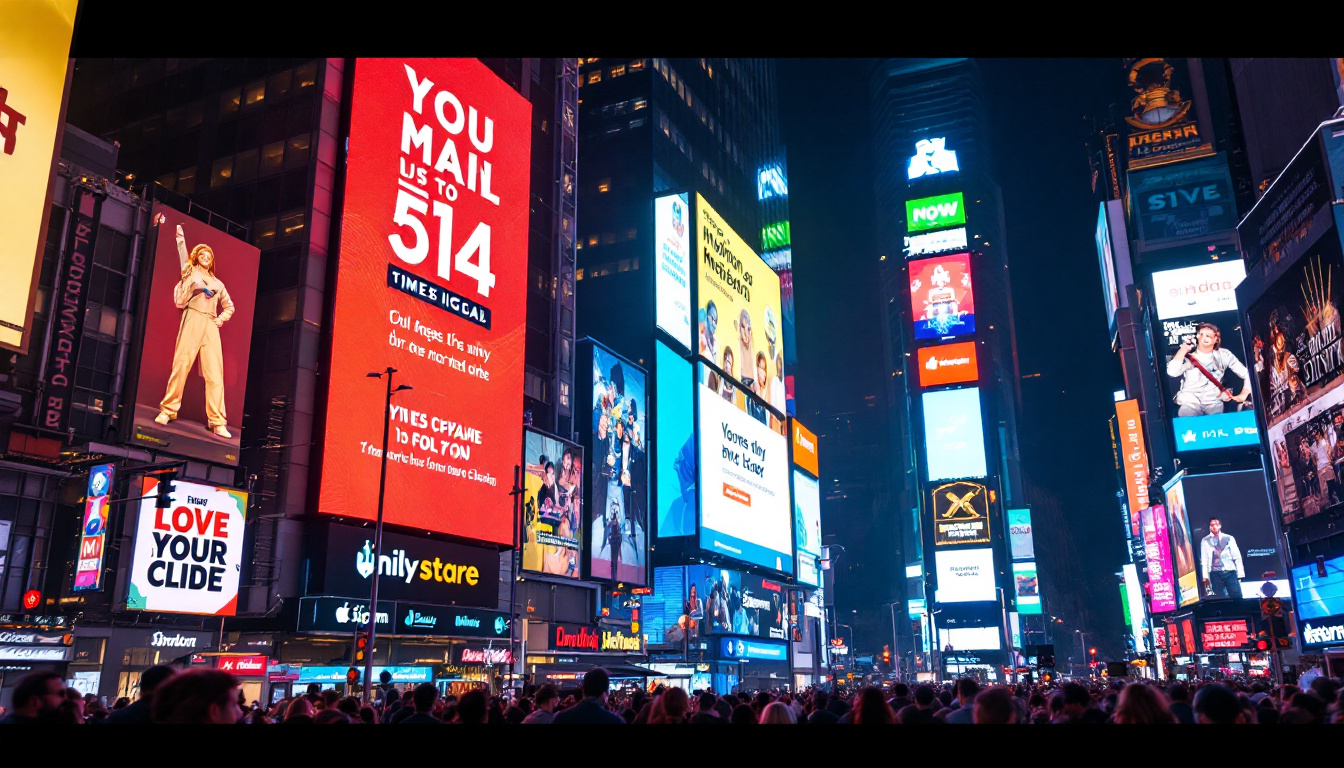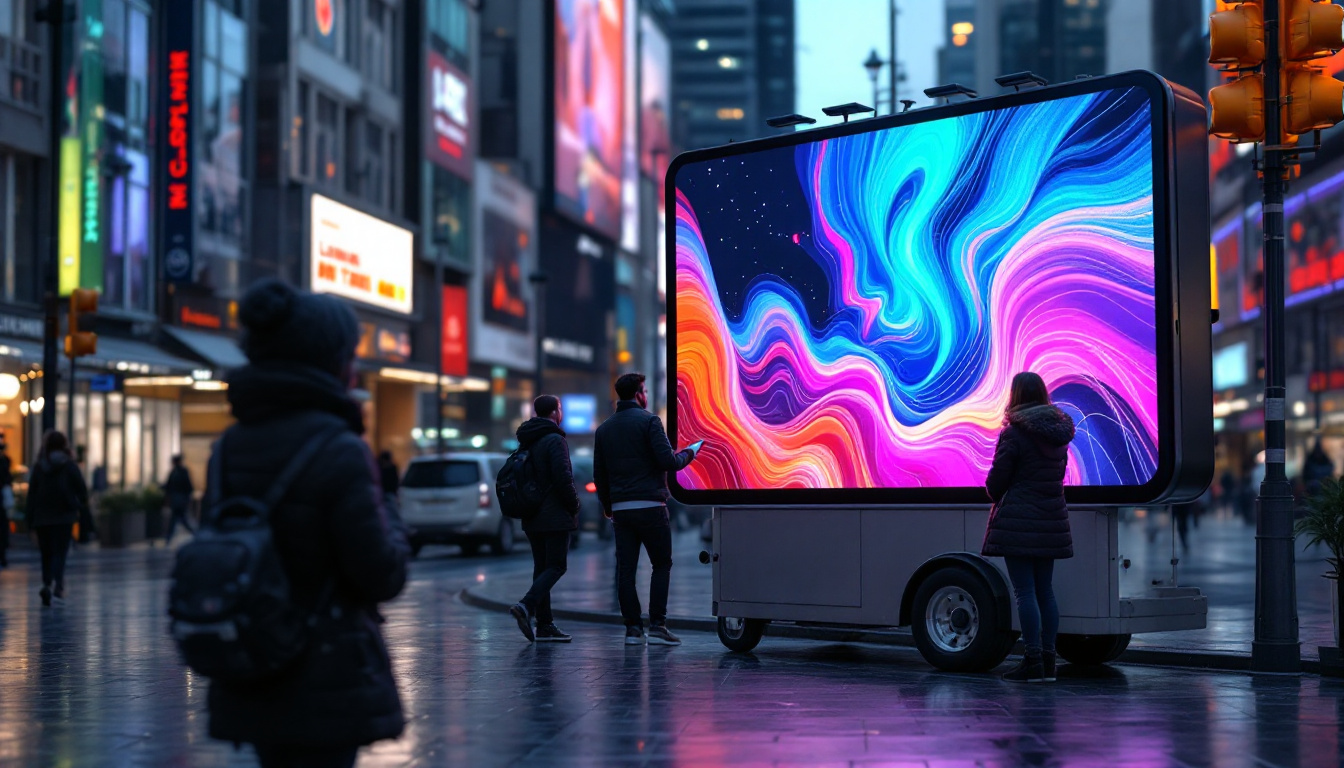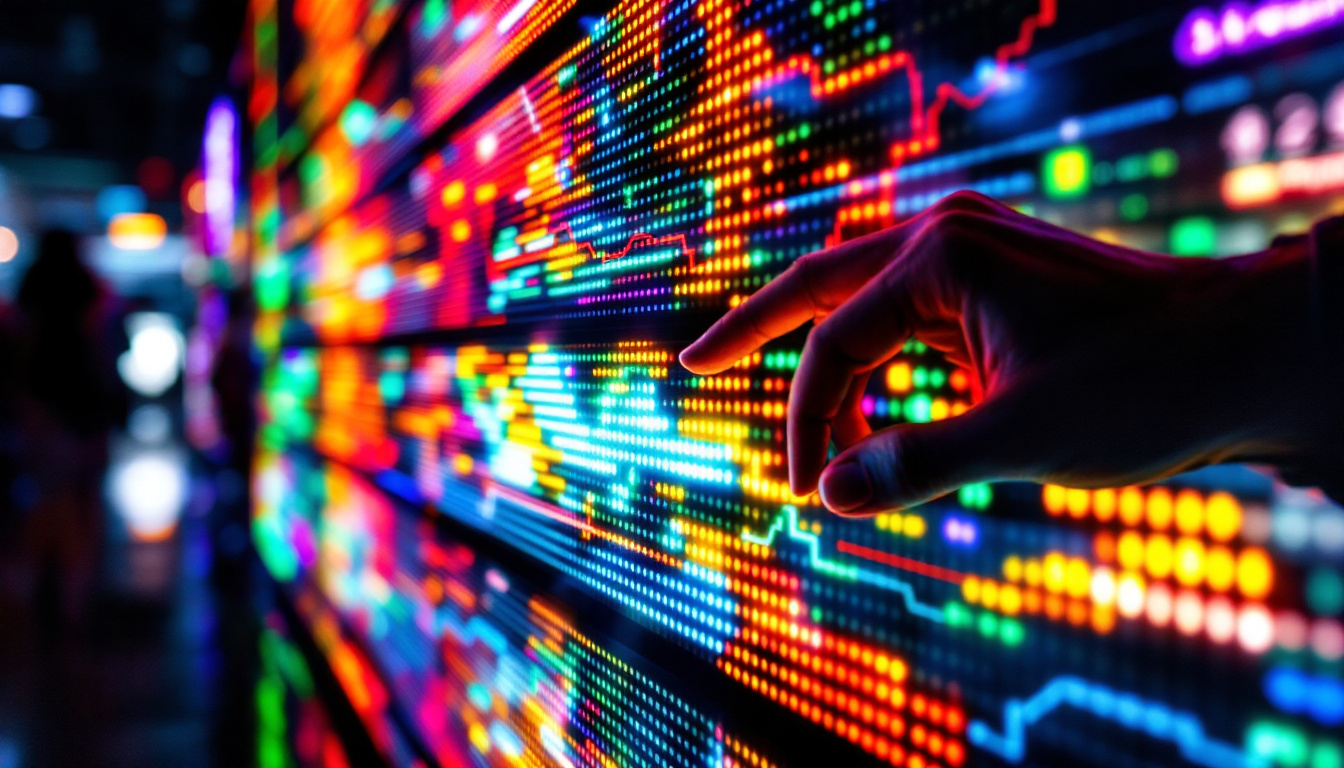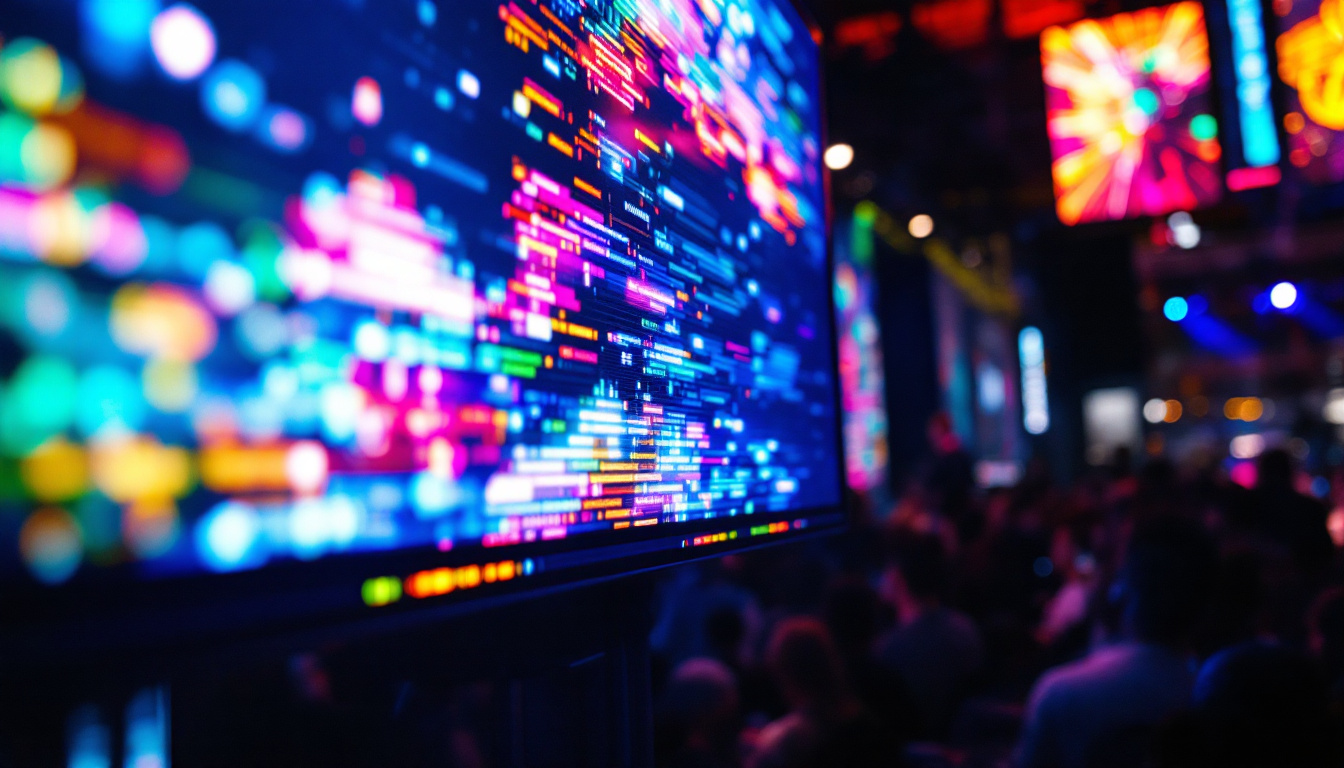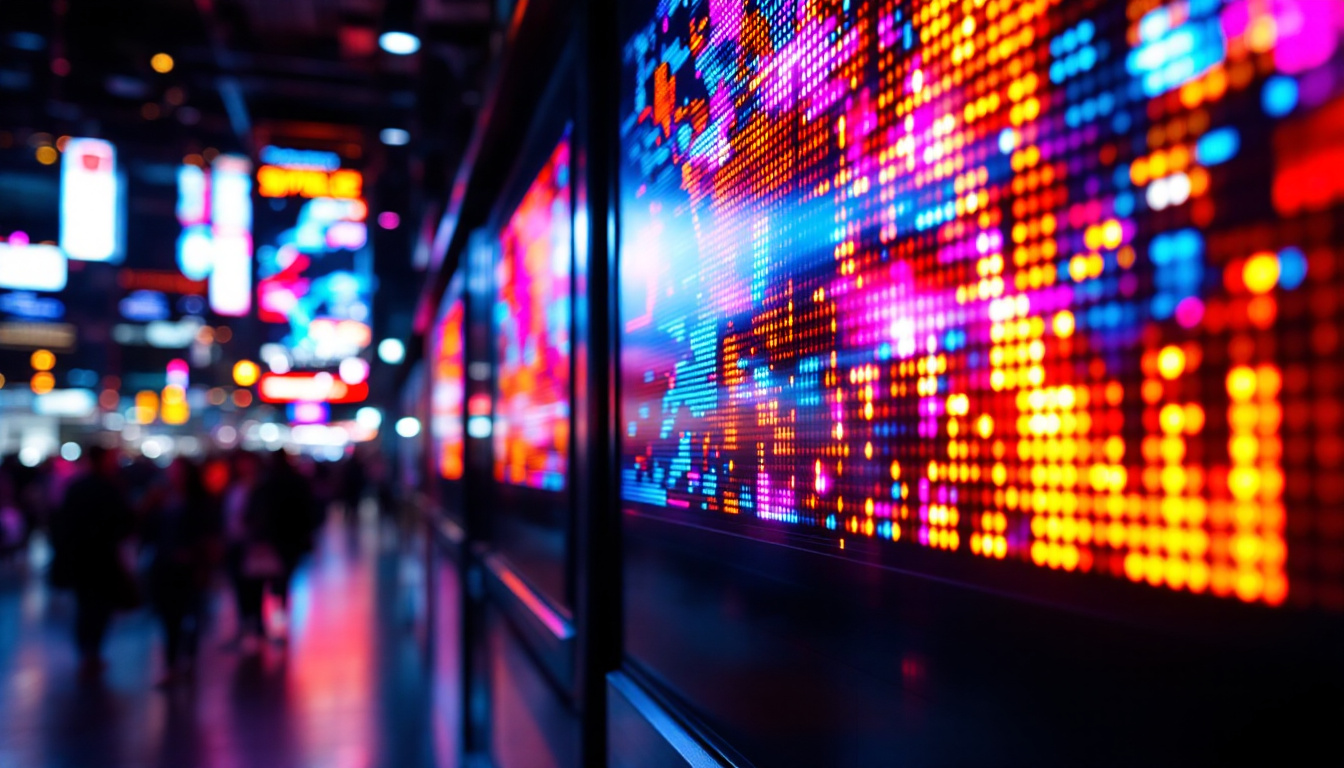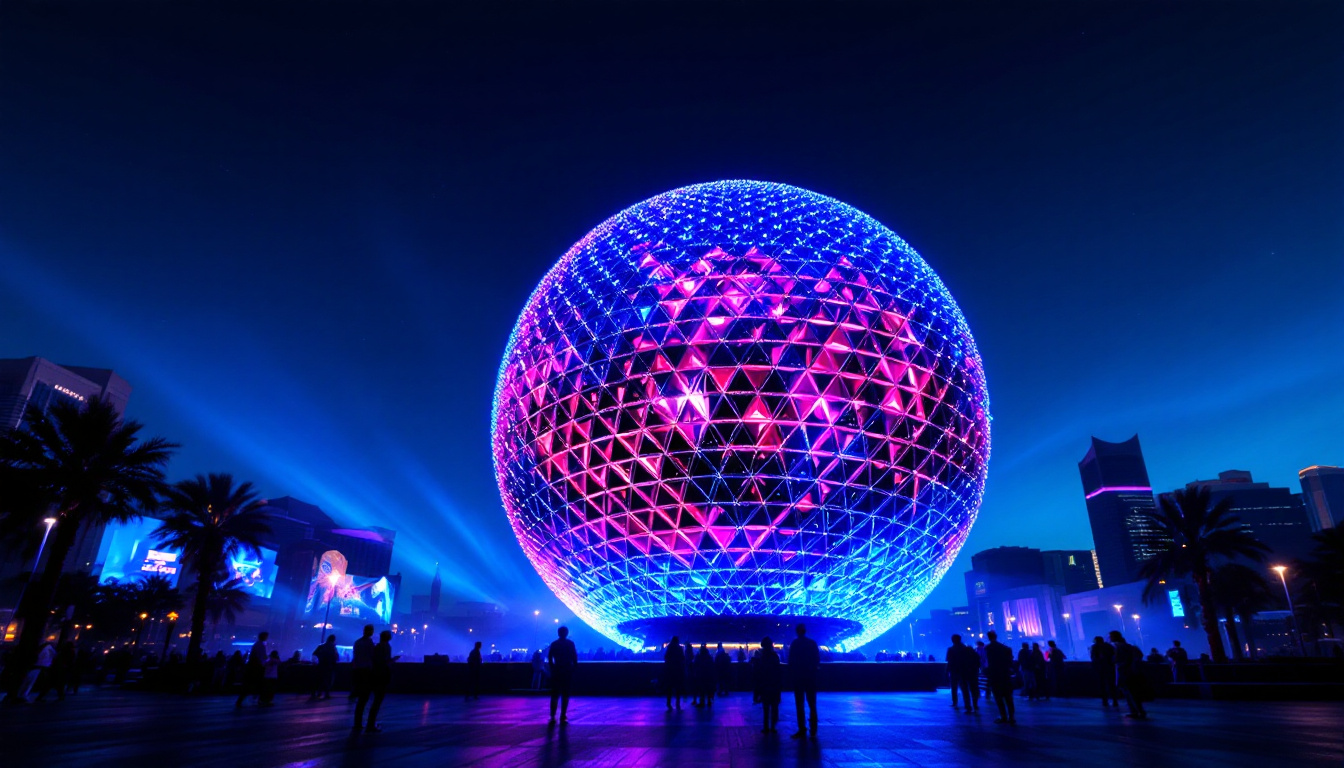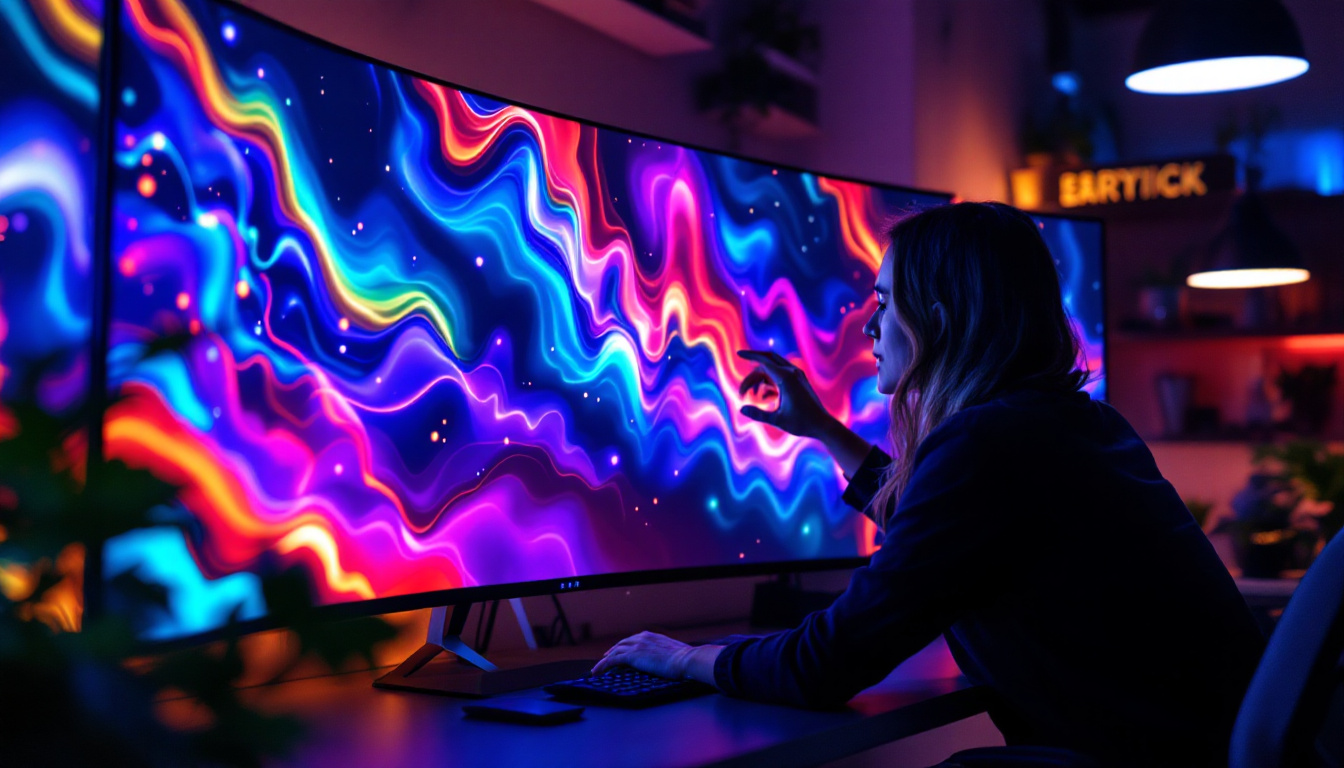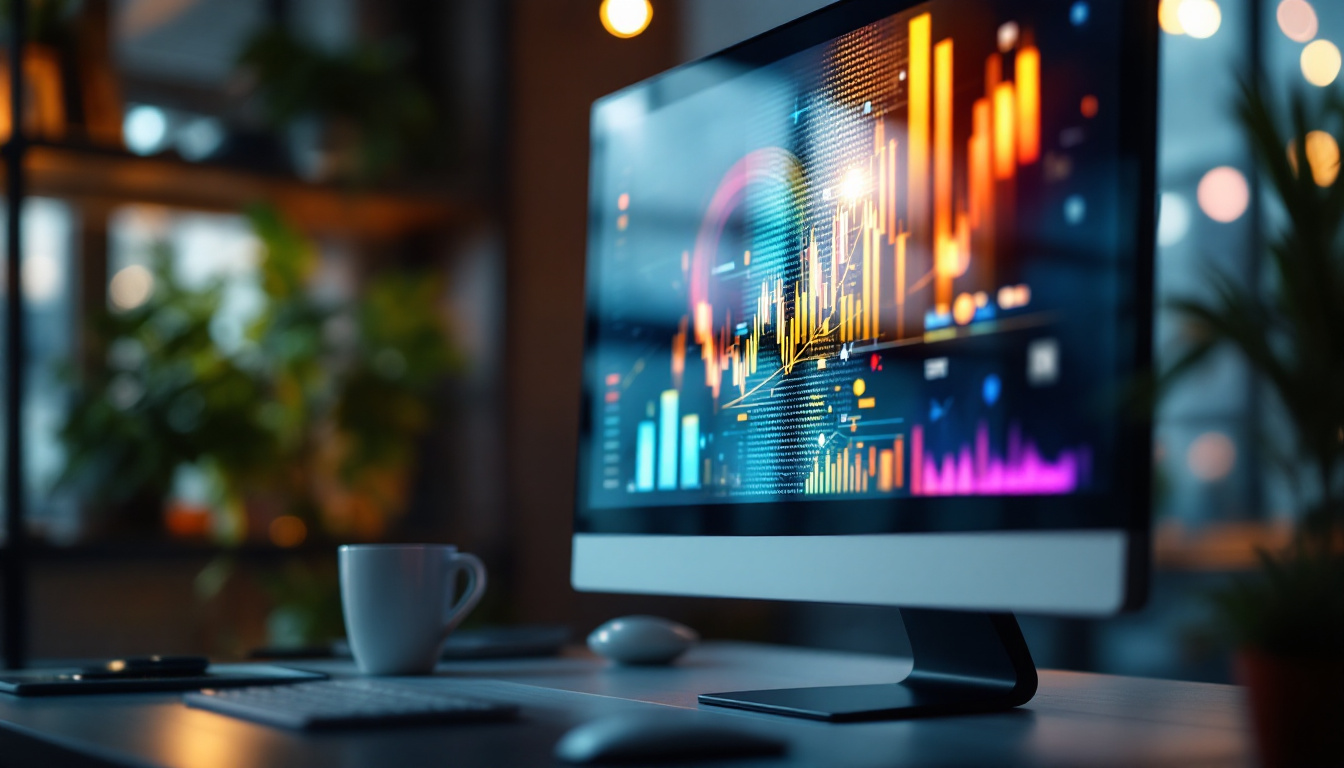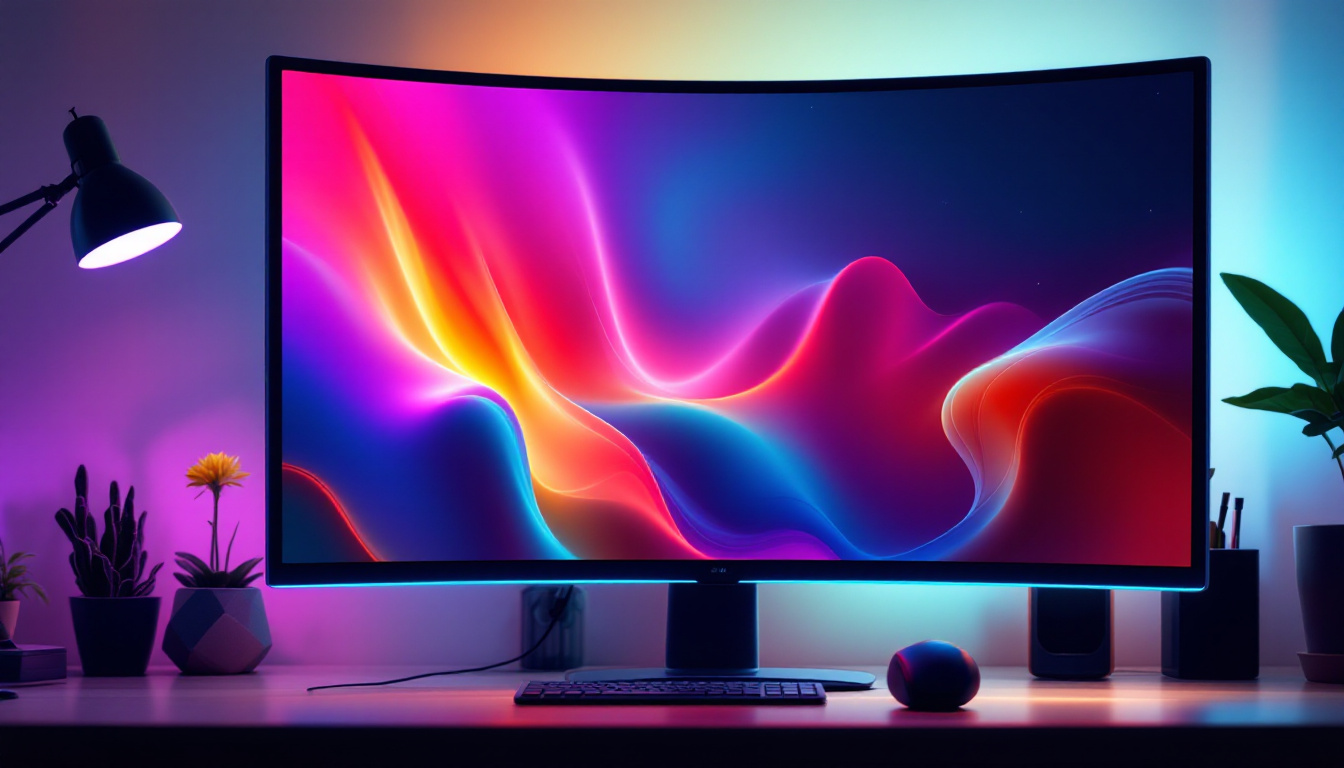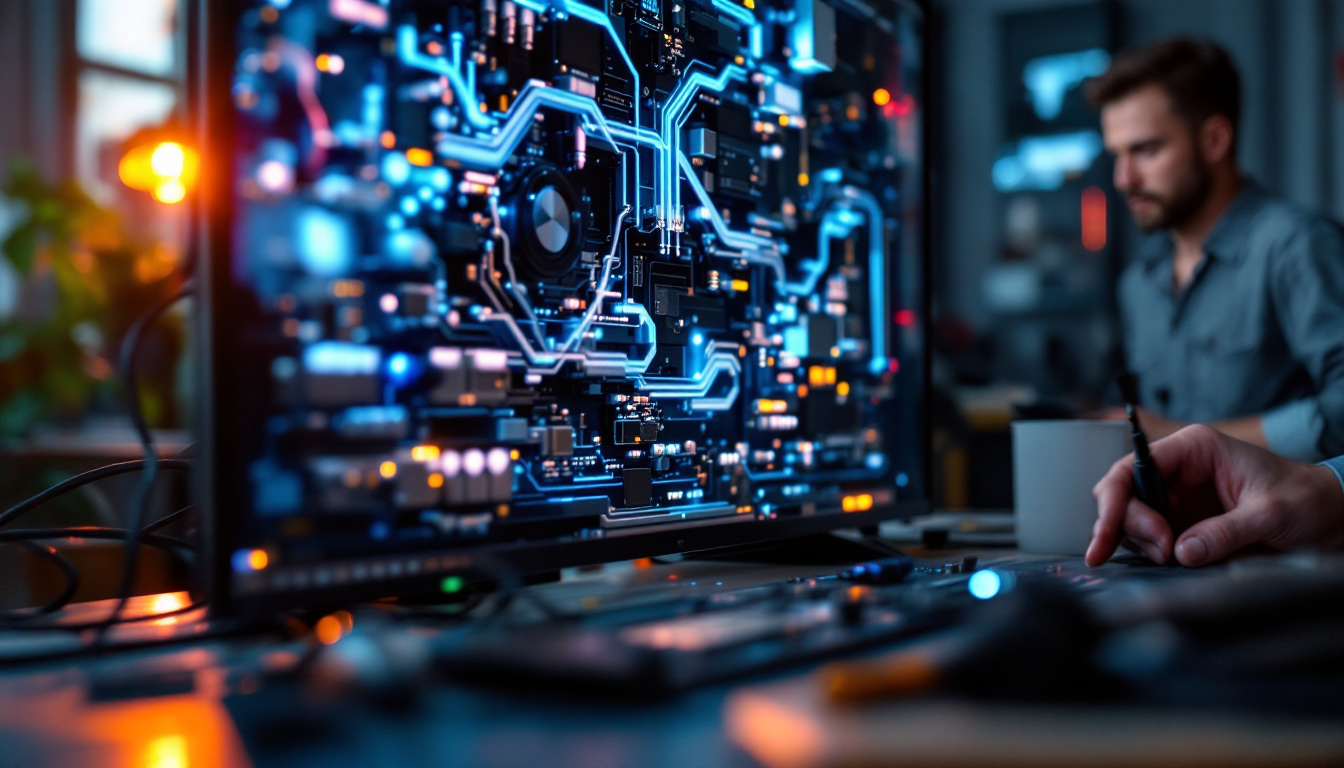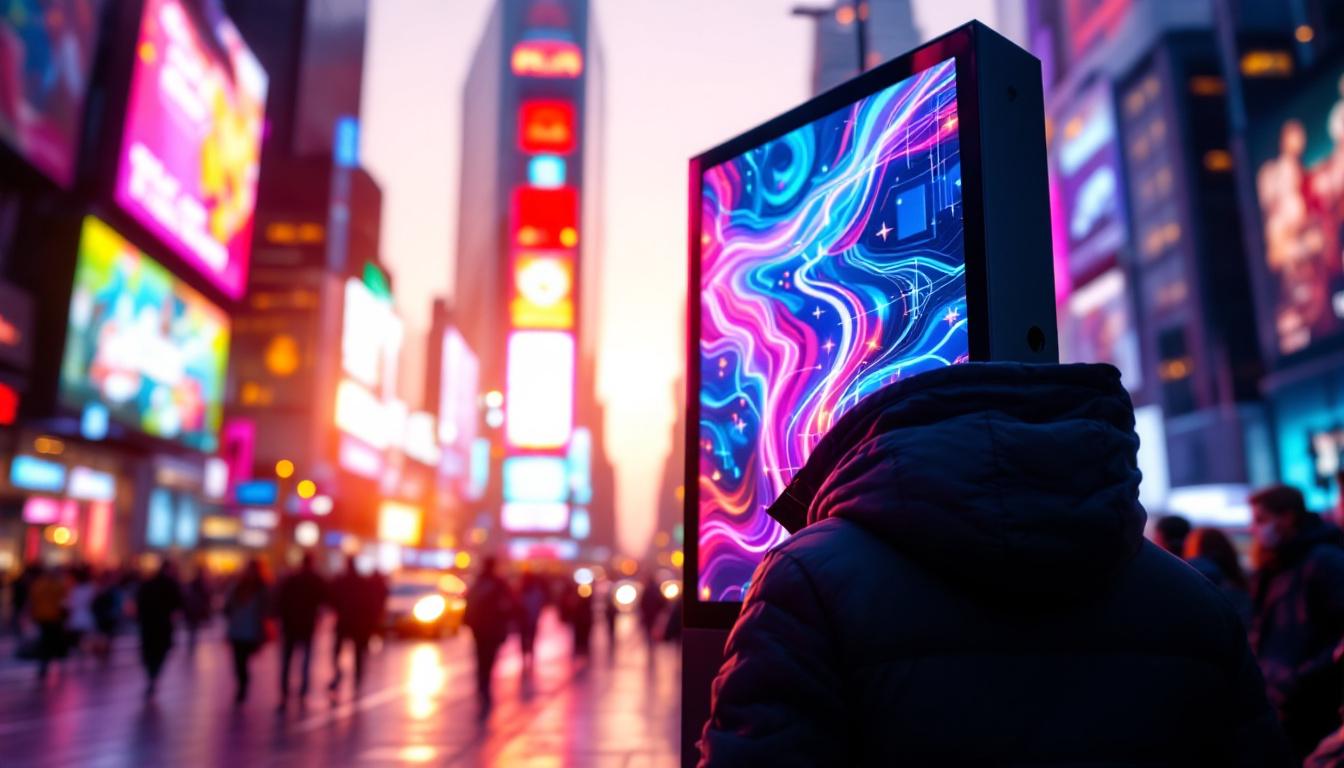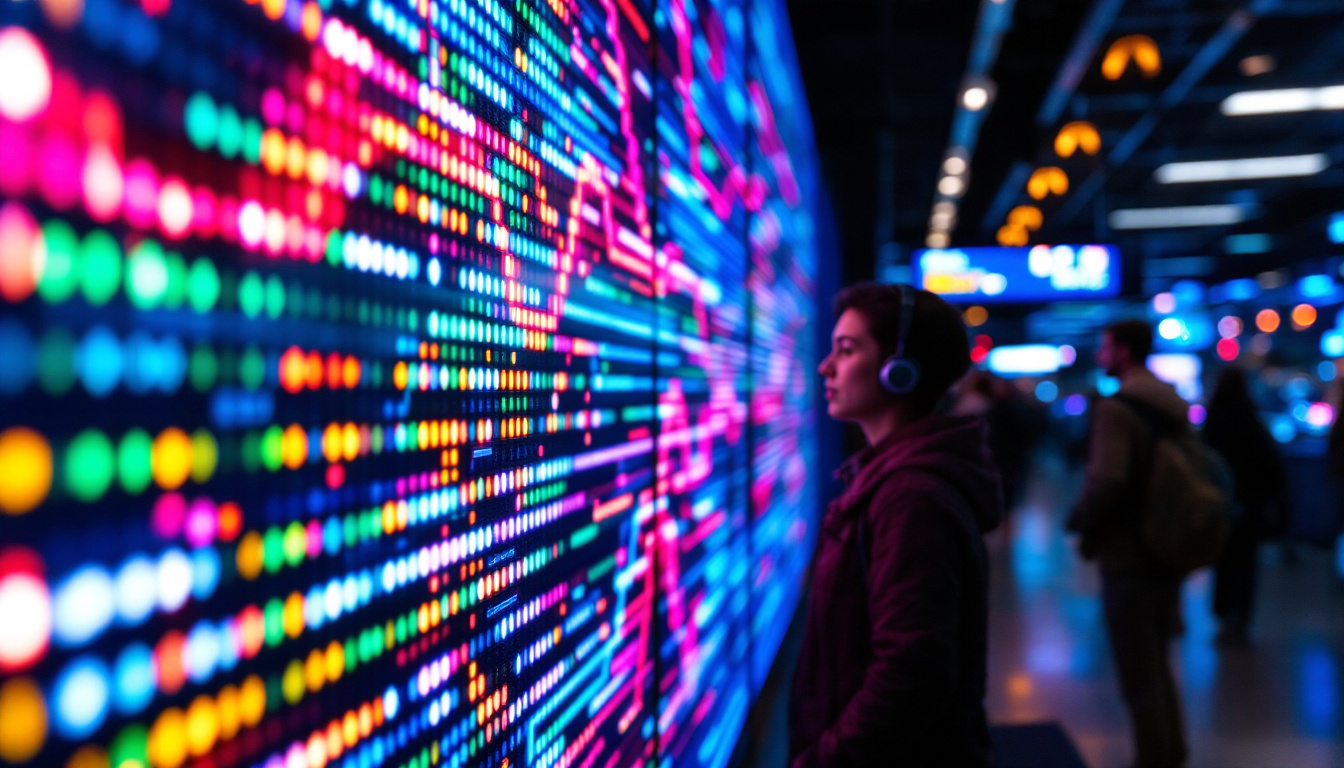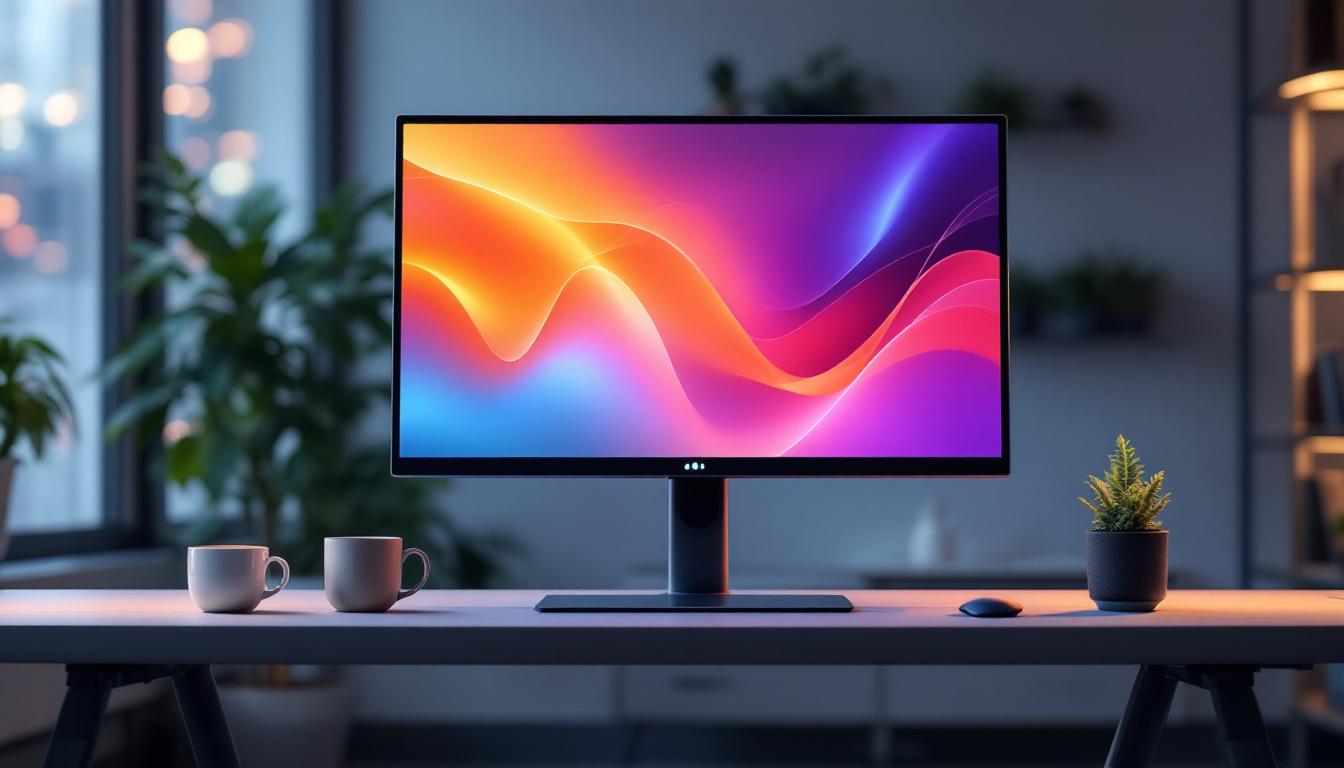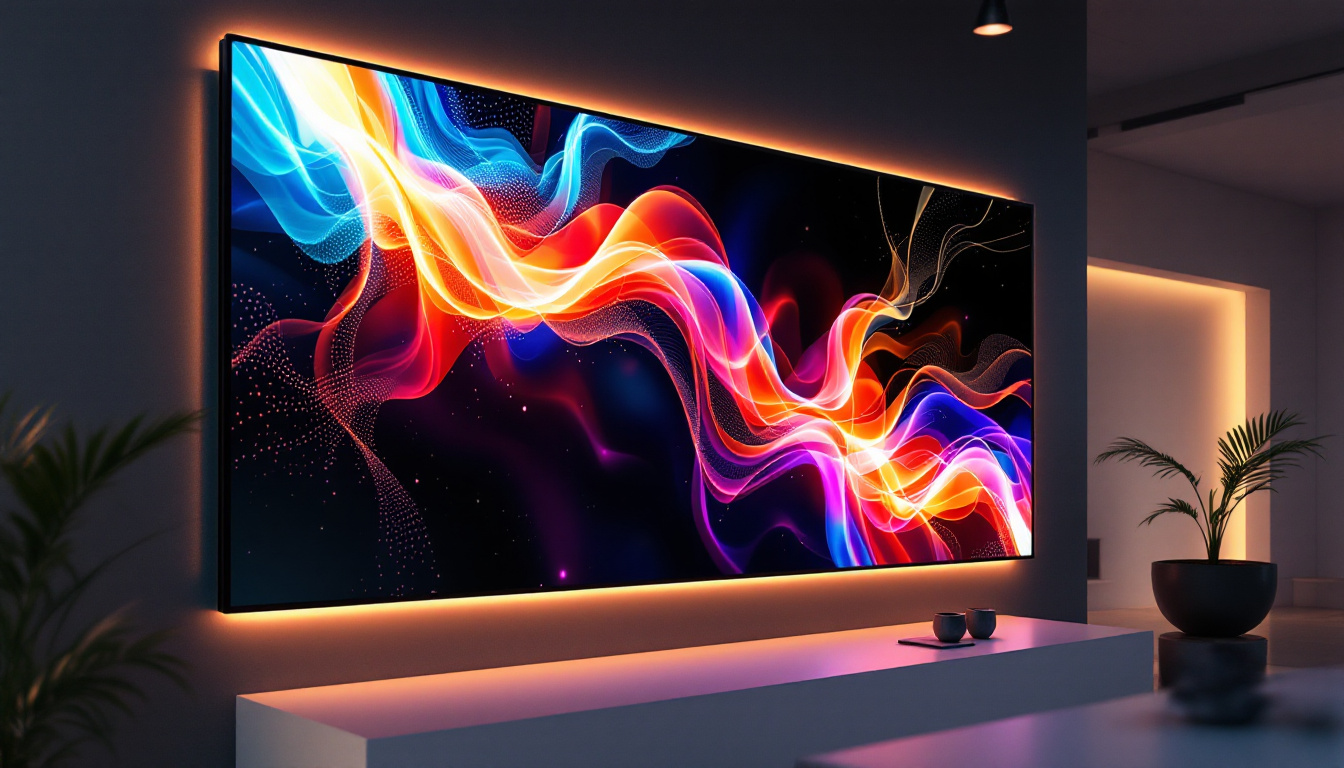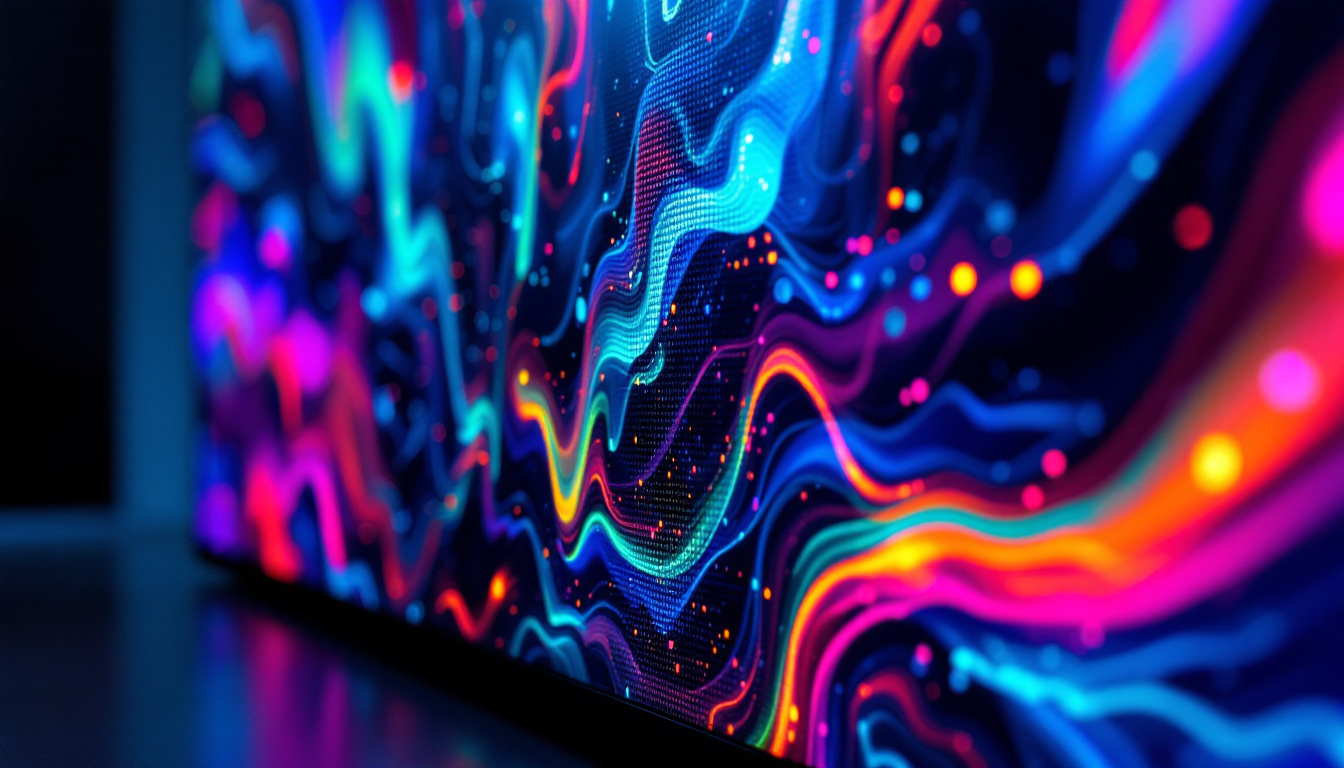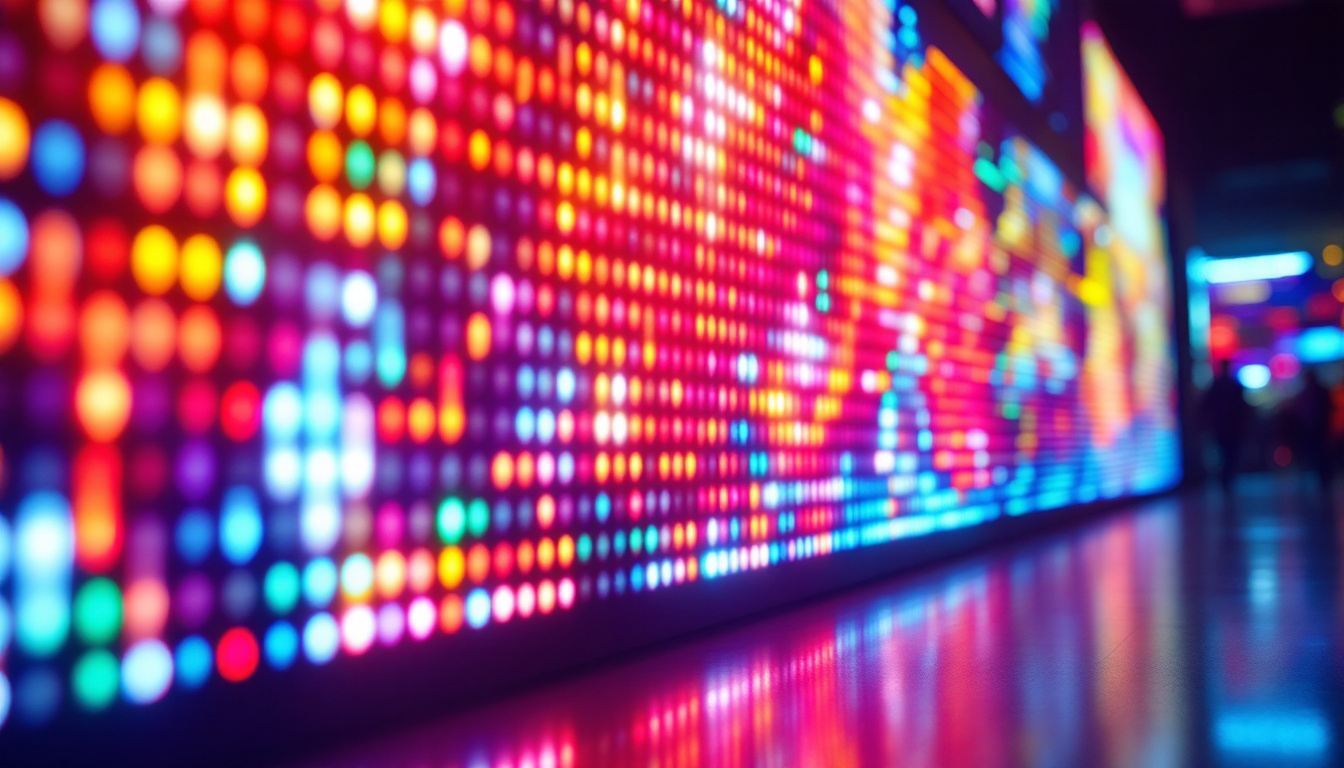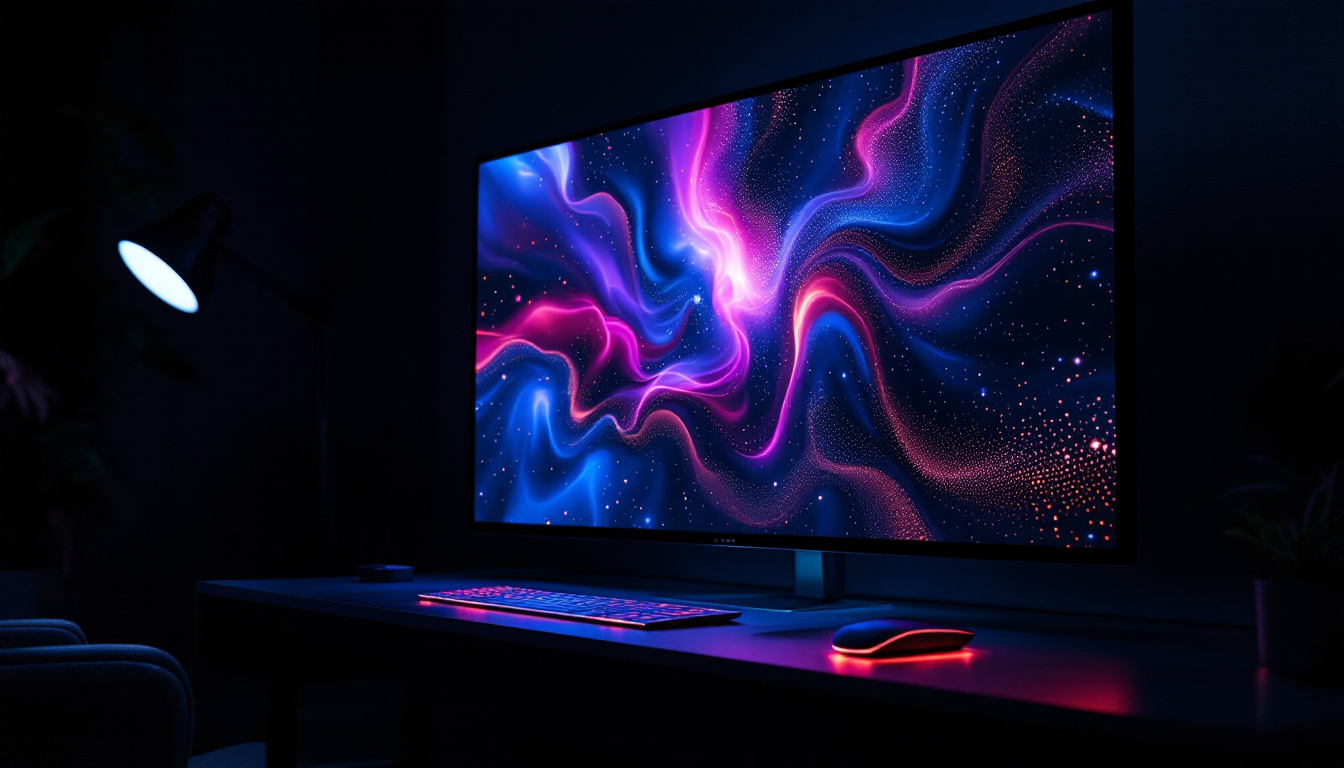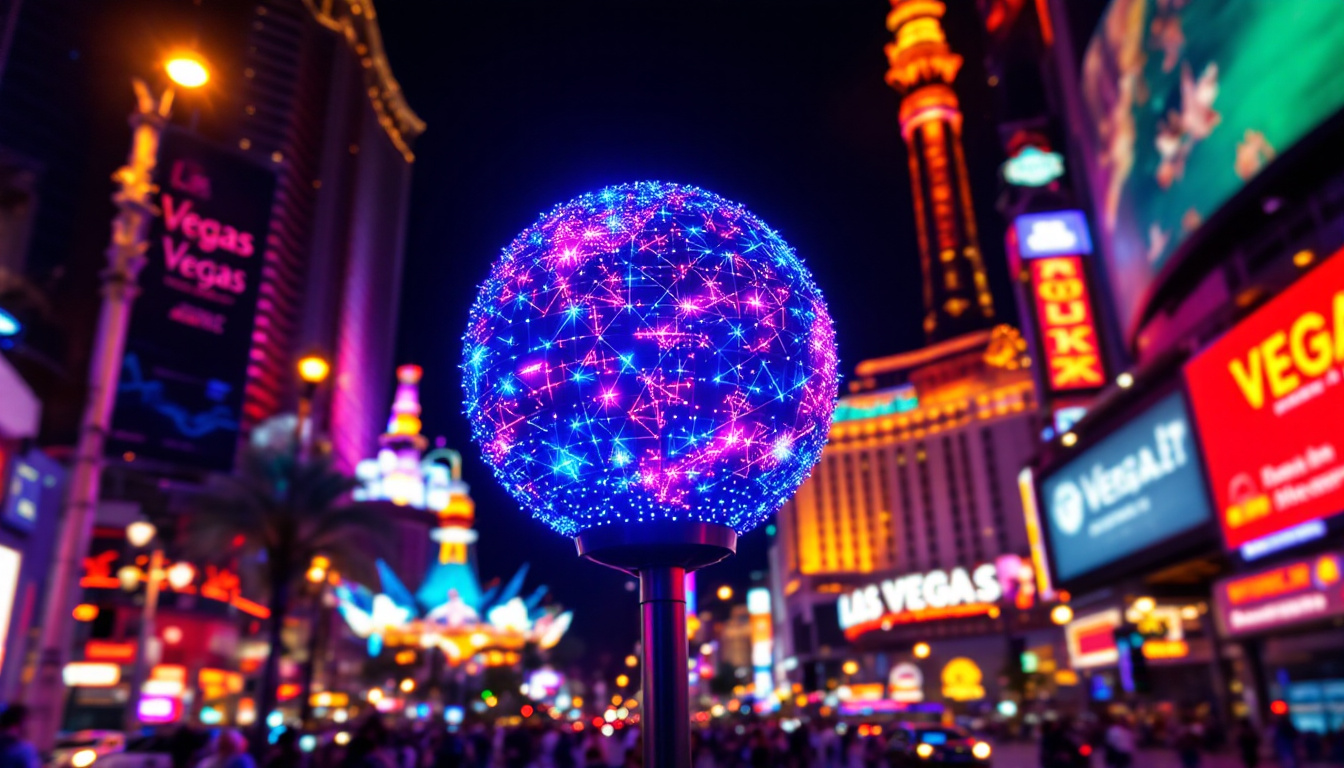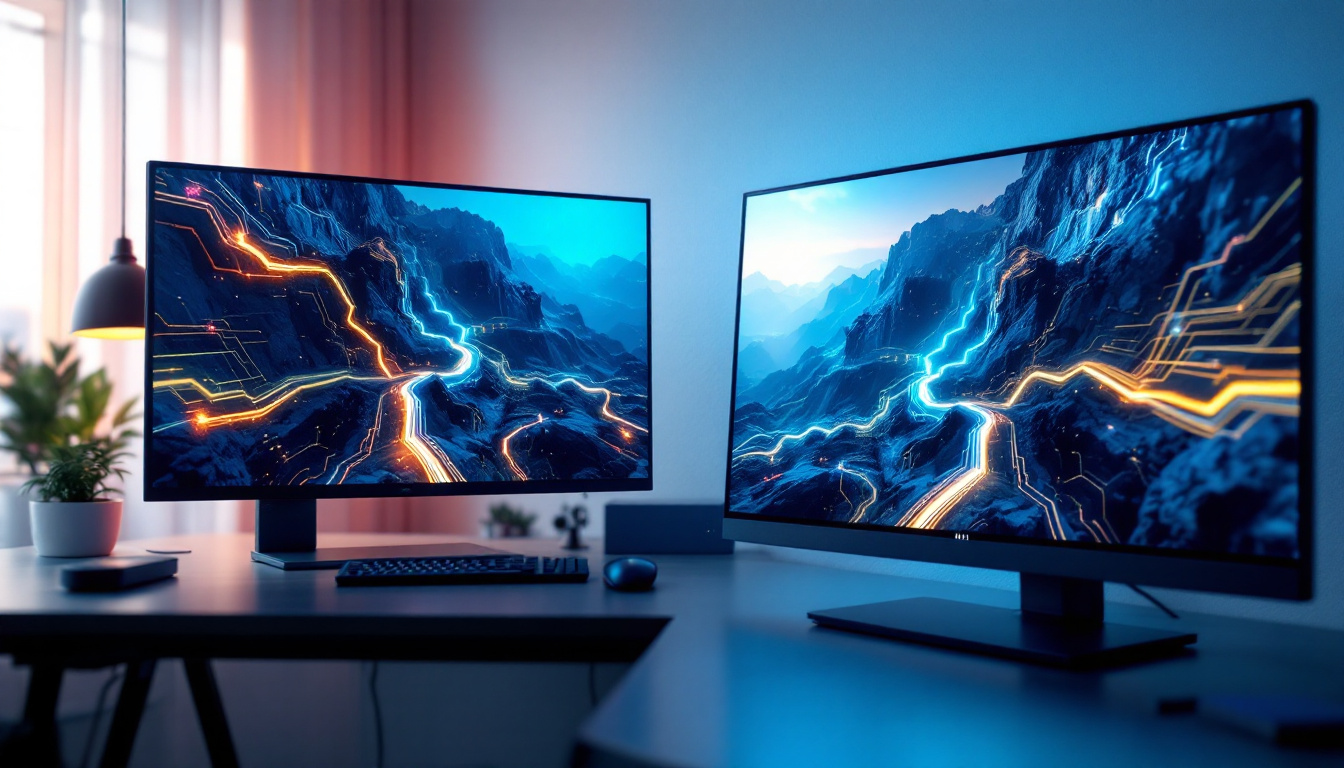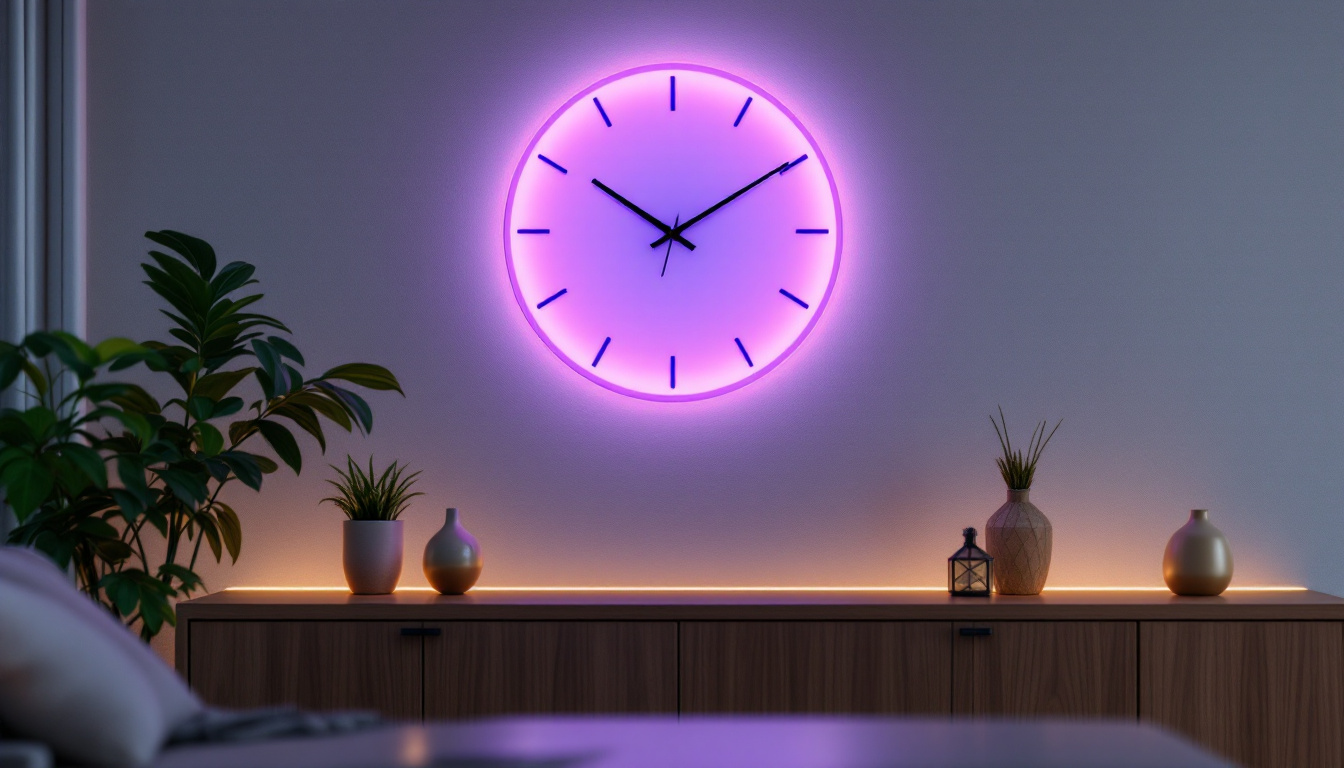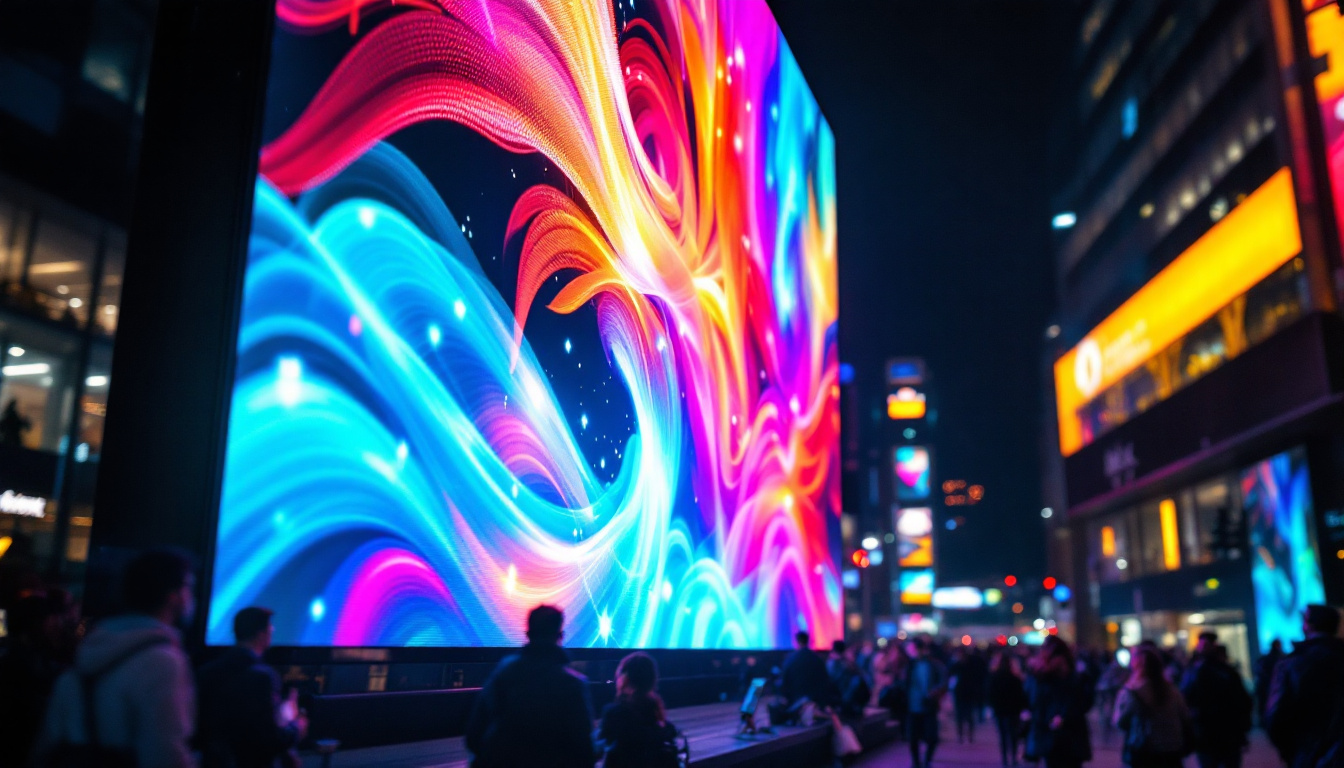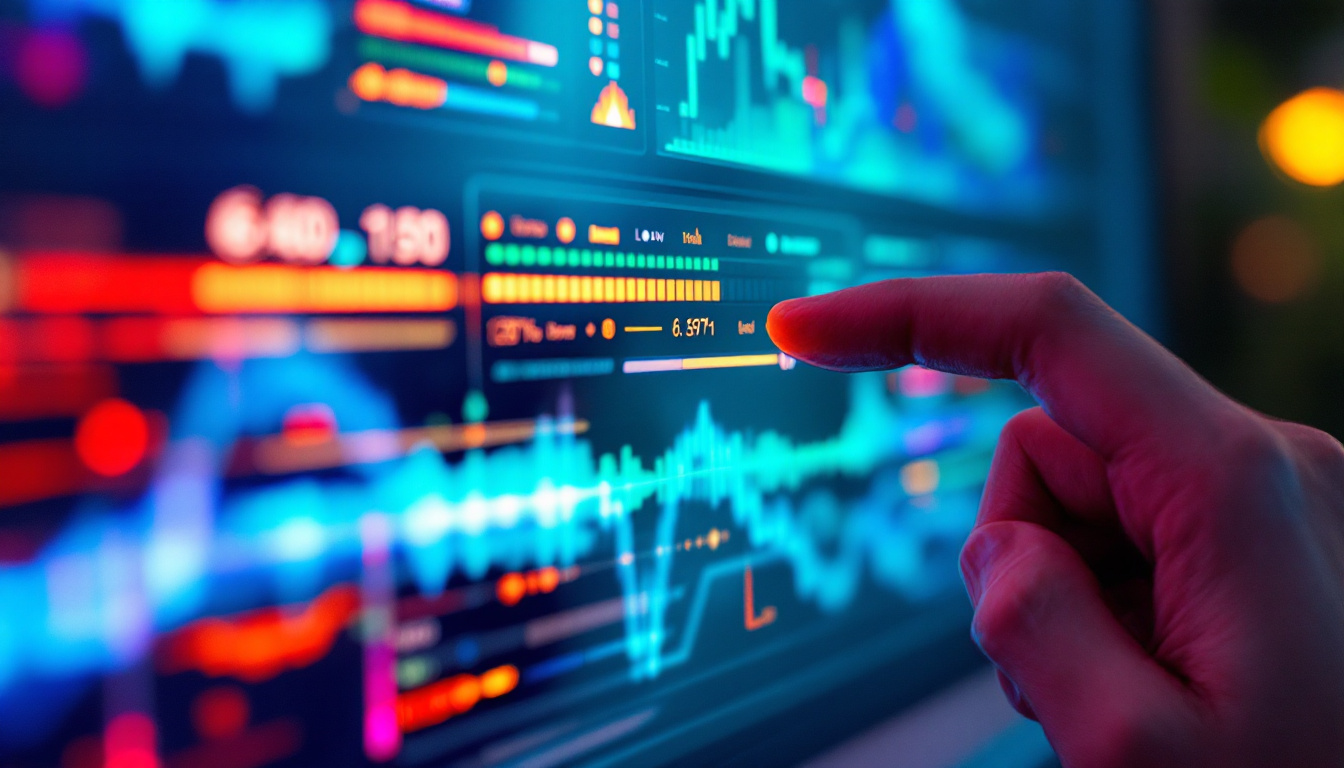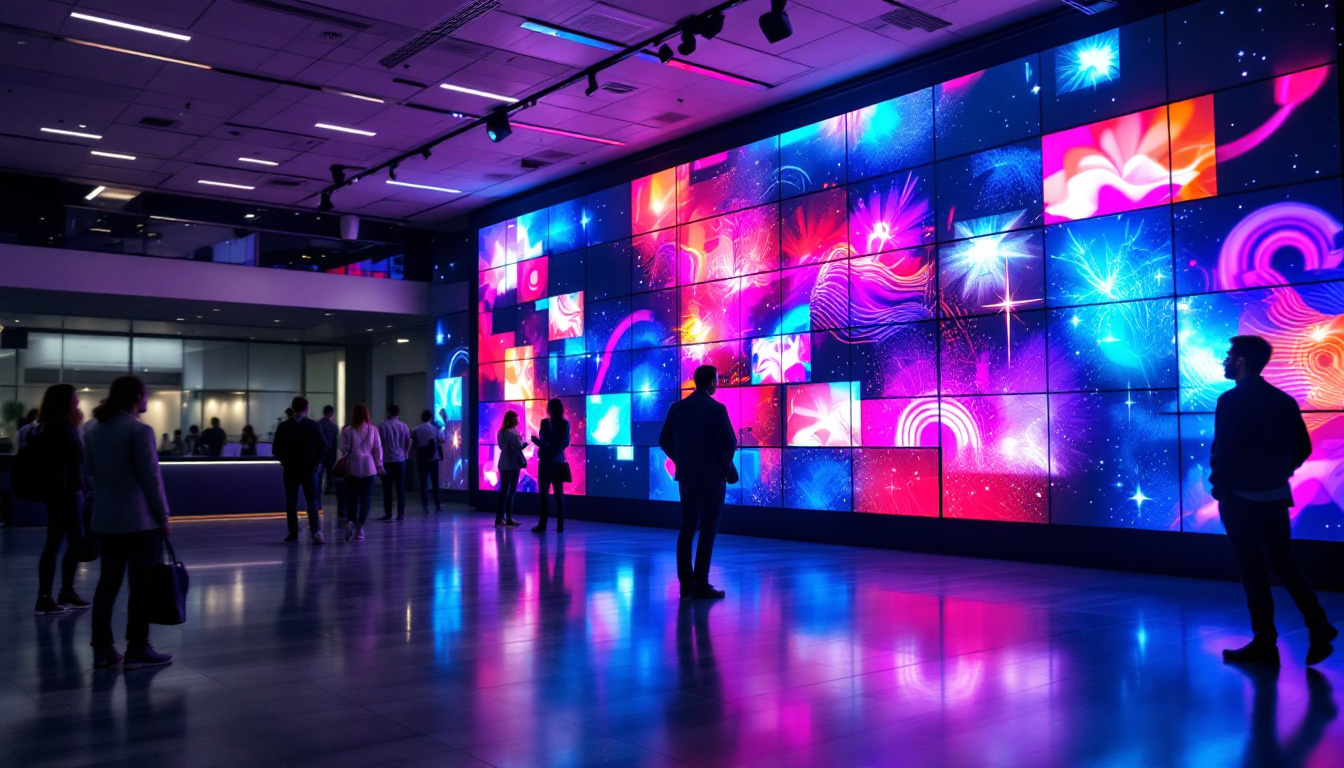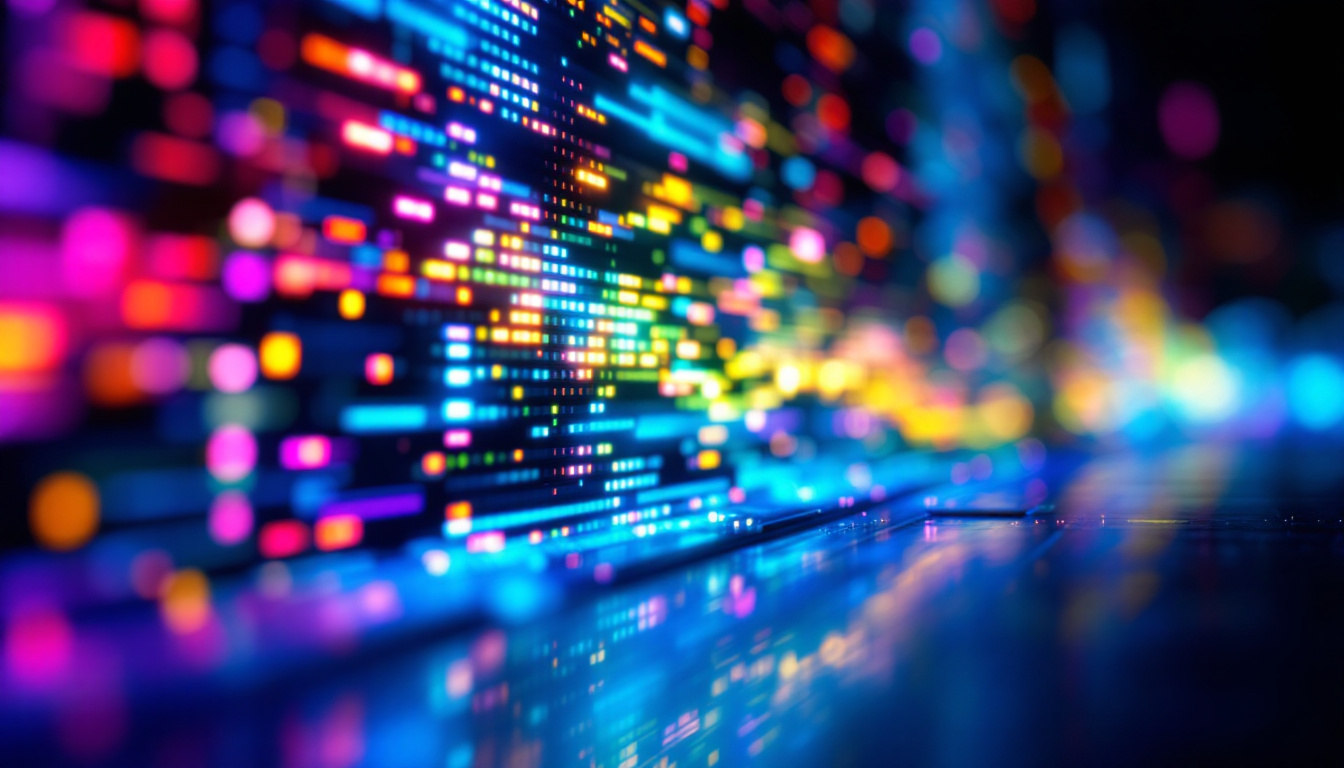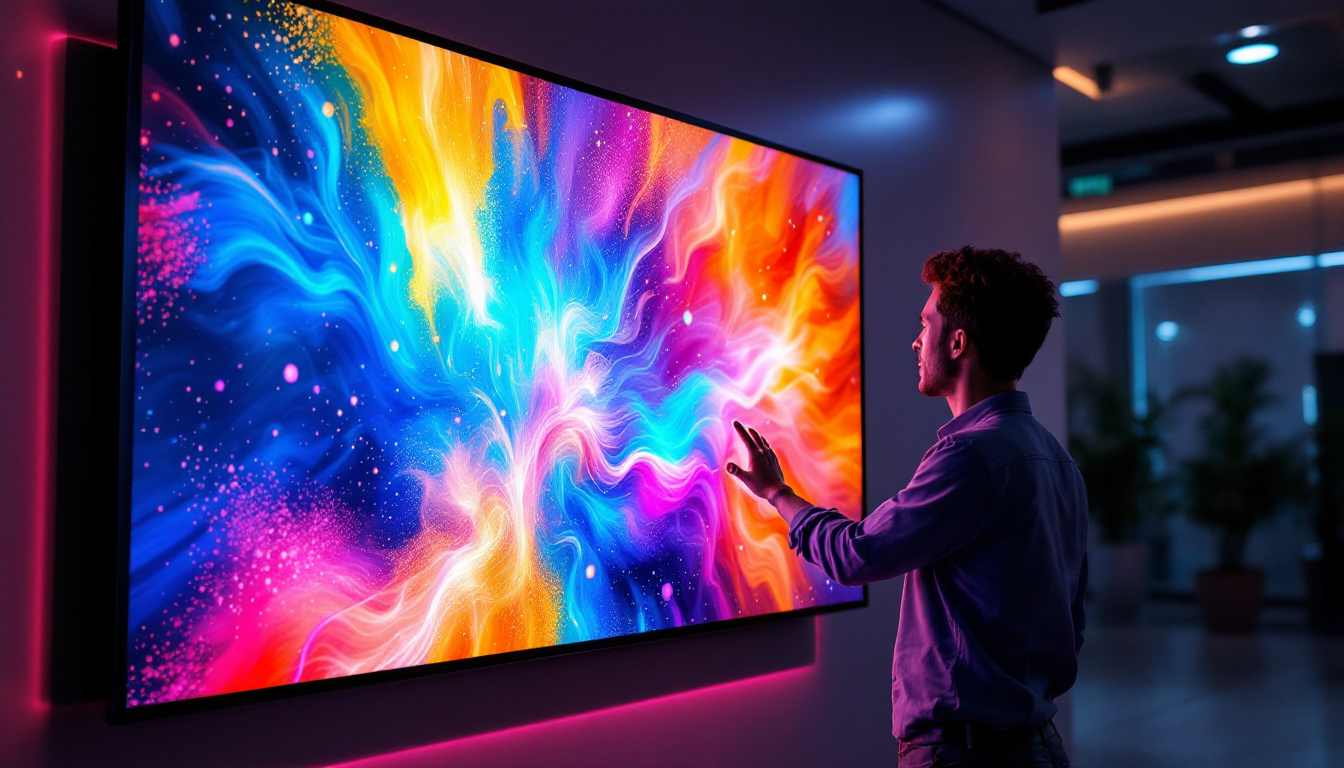In the modern world, LED displays have become a staple in various industries, from advertising to entertainment. Their versatility, energy efficiency, and vibrant visuals make them an attractive option for businesses and organizations looking to communicate effectively with their audiences. This article delves into the intricacies of LED displays, exploring their technology, applications, and benefits.
Understanding LED Technology
LED, or Light Emitting Diode, technology has revolutionized the way we perceive visual content. Unlike traditional display technologies, LEDs offer several advantages that enhance the viewing experience. Their energy efficiency, longevity, and compact size have made them the preferred choice for a wide range of applications, from consumer electronics to large-scale advertising. As a result, LED technology has not only improved the quality of displays but has also contributed to more sustainable practices in the tech industry.
How LED Displays Work
At the core of LED technology is the semiconductor material that emits light when an electric current passes through it. This process is known as electroluminescence. In LED displays, thousands of these tiny diodes are arranged in a grid to create images and videos. The combination of red, green, and blue (RGB) diodes allows for a wide spectrum of colors, resulting in vibrant and dynamic visuals. The precision with which these diodes can be controlled enables stunning effects, such as smooth transitions and high frame rates, which are essential for modern media consumption.
LED displays can be categorized into two main types: direct view and backlit. Direct view LED displays consist of individual pixels made up of RGB diodes, while backlit displays use LEDs to illuminate liquid crystal displays (LCDs). Direct view technology is commonly used for large screens, such as billboards and stadium displays, due to its ability to produce bright and clear images even in direct sunlight. Furthermore, advancements in technology have led to the development of microLEDs, which are even smaller and offer higher pixel density, paving the way for ultra-high-definition displays that can be used in everything from smartphones to massive video walls.
Types of LED Displays
LED displays come in various forms, each designed for specific applications. Some common types include:
- Indoor LED Displays: These displays are typically used in venues like shopping malls, conference centers, and theaters. They offer high resolution and vibrant colors, making them ideal for close viewing. The ability to customize these displays with various shapes and sizes allows businesses to create engaging environments that attract customers and enhance the overall experience.
- Outdoor LED Displays: Built to withstand harsh weather conditions, outdoor LED displays are used for advertising billboards, sports arenas, and public events. They are designed to be visible from a distance and are often brighter than indoor displays. Many outdoor models also incorporate advanced features such as automatic brightness adjustment, ensuring optimal visibility regardless of the time of day or weather conditions.
- Transparent LED Displays: These innovative displays allow for visibility through the screen, making them perfect for retail environments and creative installations. They combine functionality with aesthetics, providing a unique viewing experience. Retailers can showcase products behind the display while simultaneously displaying advertisements, creating a captivating blend of information and visual appeal.
Additionally, there are flexible LED displays that can bend and curve to fit unconventional spaces, opening up new possibilities for design and creativity. These displays are particularly popular in modern architecture and interior design, where they can be integrated into walls, ceilings, or even furniture. As LED technology continues to evolve, we can expect to see even more innovative applications that push the boundaries of how we interact with visual content in our daily lives.
Applications of LED Displays
The versatility of LED displays has led to their adoption across various sectors. Their applications are vast and continually expanding, driven by technological advancements and creative innovations.
Advertising and Marketing
One of the most prominent uses of LED displays is in advertising. Businesses leverage the eye-catching nature of LED screens to capture consumer attention. From dynamic billboards on busy streets to interactive displays in shopping centers, LED technology allows for engaging content that can be updated in real-time.
Moreover, the ability to display high-definition videos and animations enhances the effectiveness of marketing campaigns. Advertisers can create captivating visuals that resonate with their target audience, ultimately driving sales and brand awareness.
Entertainment and Events
In the entertainment industry, LED displays play a crucial role in enhancing the audience experience. Concerts, festivals, and sporting events utilize large LED screens to broadcast live performances, provide information, and create immersive environments.
During live events, LED displays can be used for various purposes, such as showing instant replays, displaying scores, or even providing interactive experiences for attendees. This technology not only enhances the visual appeal but also fosters engagement and interaction among the audience.
Corporate and Educational Use
LED displays are increasingly being adopted in corporate settings for presentations, meetings, and training sessions. Their ability to deliver clear visuals and dynamic content makes them ideal for conveying complex information effectively.
In educational environments, LED displays can be used to create interactive learning experiences. Teachers can present multimedia content, engage students with interactive lessons, and even facilitate remote learning through video conferencing capabilities.
Benefits of LED Displays
The advantages of LED displays extend beyond their visual appeal. They offer a range of benefits that contribute to their growing popularity across various industries.
Energy Efficiency
One of the most significant benefits of LED technology is its energy efficiency. Compared to traditional display technologies, LED displays consume significantly less power. This not only reduces operational costs but also minimizes the environmental impact.
Furthermore, LED displays have a longer lifespan, which means less frequent replacements and lower maintenance costs. This longevity contributes to their overall sustainability, making them a responsible choice for businesses looking to reduce their carbon footprint.
High Visibility and Brightness
LED displays are known for their exceptional brightness and visibility, even in challenging lighting conditions. Outdoor LED displays, in particular, are designed to be seen in direct sunlight, making them ideal for outdoor advertising and events.
The high contrast ratio of LED displays ensures that images and videos remain clear and vibrant, regardless of the ambient light. This capability is crucial for capturing attention and delivering impactful messages.
Versatility and Customization
LED displays are incredibly versatile, allowing for a wide range of applications and configurations. They can be customized in size, shape, and resolution to suit specific needs. This adaptability makes them suitable for various environments, from small retail spaces to large stadiums.
Moreover, the modular nature of LED displays enables easy scalability. Businesses can start with a smaller setup and expand as needed, ensuring that their investment grows with their requirements.
Challenges and Considerations
While LED displays offer numerous benefits, there are also challenges and considerations that businesses should keep in mind when implementing this technology.
Initial Investment Costs
The initial cost of purchasing and installing LED displays can be significant. Although prices have decreased over the years, high-quality LED screens still require a considerable investment. Businesses must weigh the long-term benefits against the upfront costs to determine if LED technology aligns with their budget and goals.
Additionally, ongoing maintenance and potential upgrades should be factored into the overall cost analysis. Understanding the total cost of ownership is essential for making informed decisions.
Content Management
Effective content management is crucial for maximizing the impact of LED displays. Businesses must develop engaging and relevant content that resonates with their audience. This requires a strategic approach to content creation, scheduling, and updates.
Investing in content management systems and tools can help streamline this process, ensuring that the displays are always showcasing fresh and engaging material. Without effective content management, the potential of LED displays may be underutilized.
Future Trends in LED Display Technology
The LED display industry is continually evolving, with new technologies and trends emerging regularly. Staying informed about these developments is essential for businesses looking to leverage the latest advancements.
Advancements in Resolution and Pixel Density
As technology progresses, the resolution and pixel density of LED displays continue to improve. Higher resolution displays allow for more detailed and sharper images, enhancing the overall viewing experience. This trend is particularly important for applications that require close viewing, such as indoor displays in retail environments.
MicroLED technology, which involves the use of microscopic LEDs, is gaining traction. This technology promises even higher resolution and improved color accuracy, making it a game-changer for various applications.
Integration with Smart Technologies
The integration of LED displays with smart technologies is another trend to watch. As the Internet of Things (IoT) continues to expand, LED displays can be connected to various devices and systems, allowing for real-time data display and interactivity.
This integration opens up new possibilities for businesses, enabling them to create personalized experiences for customers and streamline operations. For example, smart LED displays can adjust their content based on audience demographics or environmental conditions, enhancing engagement and effectiveness.
Conclusion
LED displays have transformed the way businesses communicate with their audiences, offering vibrant visuals, energy efficiency, and versatility. As technology continues to advance, the applications and benefits of LED displays will only expand, making them an essential tool for effective communication in various industries.
While challenges such as initial investment costs and content management exist, the long-term advantages of LED displays far outweigh these considerations. By staying informed about emerging trends and technologies, businesses can harness the full potential of LED displays and create impactful experiences for their audiences.
In a world where visual communication is paramount, LED displays stand out as a powerful medium that can captivate, inform, and engage. Embracing this technology is not just a trend; it is a strategic move towards a more dynamic and effective way of reaching audiences.
Discover LumenMatrix LED Display Solutions
Ready to elevate your visual communication strategy with the latest in LED display technology? LumenMatrix is at the forefront of innovation, offering a diverse range of LED display solutions tailored to meet your specific needs. From Indoor and Outdoor LED Wall Displays to specialized options like Vehicle, Sports, and Floor LED Displays, our products are designed to captivate your audience and amplify your message. Experience the transformative power of LED displays and join the visual revolution with LumenMatrix. Check out LumenMatrix LED Display Solutions today and see how we can help you create unforgettable visual experiences.

